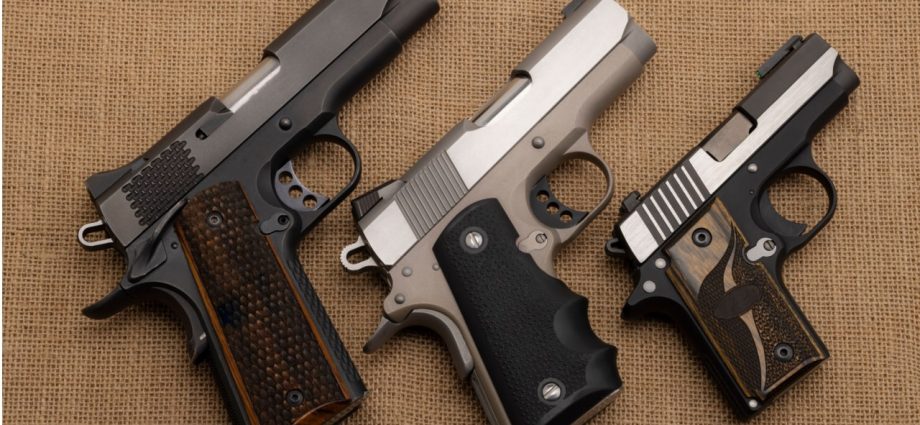The advent of advanced technology is reshaping the landscape of concealed carry pistols, signaling a new era in the design, functionality, and effectiveness of these critical self-defense tools. As we delve into this transformative period, it’s essential to examine how innovations in materials, smart technologies, and ergonomic design are converging to create the next generation of concealed carry firearms that offer enhanced safety, accuracy, and convenience for users.
The Evolution of Materials
The journey towards the next-gen concealed carry pistols begins with the evolution of materials used in their construction. Manufacturers are increasingly turning to lightweight, durable materials such as polymer composites and advanced metals like titanium and scandium. These materials not only reduce the weight of the pistol, making it more comfortable for everyday carry but also ensure longevity and reliability under various environmental conditions. The use of these advanced materials means that the latest concealed carry pistols can withstand the rigors of daily use without compromising on performance or safety.
Smart Gun Technology
Perhaps the most groundbreaking advancement is the integration of smart gun technology into concealed carry pistols. These smart firearms incorporate biometric sensors, RFID (Radio Frequency Identification) technology, and electronic locking mechanisms that allow the gun to be fired only by authorized users. This technology addresses critical safety concerns by preventing accidental discharges and unauthorized use, a paramount consideration for those who carry firearms for personal protection. Moreover, smart guns can connect to smartphones or smartwatches, providing owners with real-time data on their weapon’s status, including battery levels, lock status, and even the location of the firearm if it is misplaced or stolen.
Enhanced Ergonomics and Customizability
The next generation of concealed carry pistols also emphasizes enhanced ergonomics and customizability, ensuring that the firearm can be comfortably and effectively used by a wide range of individuals. Adjustable grips, interchangeable backstraps, and ambidextrous controls are becoming standard features, allowing users to modify their pistols for a personalized fit. This customizability extends to the sighting systems, with many models now offering the ability to easily mount red dot sights or other optical enhancements. These improvements not only contribute to a more comfortable carrying experience but also significantly enhance accuracy and ease of use in high-stress situations.
Improved Ammunition and Caliber Options
Advancements in ammunition technology are also playing a crucial role in the development of next-gen concealed carry pistols. Manufacturers are designing firearms that can accommodate newer, more effective ammunition types, including rounds with improved ballistics, reduced recoil, and enhanced stopping power. Additionally, the trend towards caliber versatility allows users to choose the caliber that best fits their needs and preferences, from the popular 9mm to more specialized options like the .380 ACP or the 9mm Makarov, offering a balance between stopping power and manageable recoil.
Connectivity and Training Tools
The integration of technology extends beyond the firearm itself. Many next-gen concealed carry pistols are designed to interface with digital training platforms and simulation systems, allowing users to practice and improve their skills in a virtual environment. These tools can track a shooter’s accuracy, reaction time, and decision-making processes, providing valuable feedback that can enhance real-world performance. Additionally, some systems offer scenario-based training modules, helping users prepare for a wide range of self-defense situations.
Regulatory and Ethical Considerations
As these technological advancements redefine what is possible with concealed carry pistols, they also raise important regulatory and ethical considerations. The implementation of smart gun technology, in particular, has sparked debate regarding privacy, security, and the potential for governmental control over firearms. There is also ongoing discussion about the impact of these technologies on gun safety laws and the responsibilities of manufacturers and owners in preventing firearm-related accidents and violence.
Conclusion:
The next generation of concealed carry pistols represents a significant leap forward in firearm technology and design. Through the integration of advanced materials, smart technologies, ergonomic improvements, and enhanced ammunition options, these firearms, exemplified by the CANIK TP9 Elite SC, are becoming safer, more reliable, and more user-friendly. However, as we embrace these innovations, it is crucial to navigate the accompanying regulatory and ethical challenges thoughtfully and responsibly. By doing so, we can ensure that the evolution of concealed carry pistols contributes positively to individual safety and societal well-being, marking a new chapter in the intersection of technology and self-defense.

